How to Grow a Healthy Hibiscus Plant
Discover the beauty of the hibiscus flower and learn about its fantastic health benefits. Together, let's create a lush, lively living space. The article below will provide detailed information about the characteristics, uses, and effective planting methods of the hibiscus plant.
General Information About the Hibiscus Plant
1. Name
Scientific Name: Hibiscus rosa-sinensis L. of the Malvaceae family.
2. Natural Characteristics
Hibiscus is a small plant, usually 1-2m tall or a mid-sized shrub growing 4-5m tall. The stem is cylindrical, round, smooth, and grayish-brown. The leaves are simple, arranged alternately, with long petioles, oval-shaped, rounded at the base, pointed at the tip, serrated edges, dark glossy on the upper side, smooth underneath, and accompanied by slender, pointed stipules.
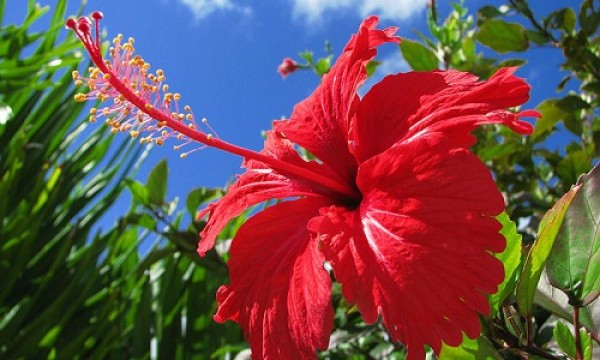
The flowers are large, solitary in leaf axils, with long stalks, bisexual, red in color, and small bracts of 6-7 slender pieces. The calyx consists of 5 fused green sepals forming a tube. The corolla has 5 free petals, broad, and thin. The stamens are numerous, fused into a long tube holding the anthers, while the pistil consists of 5 fused carpels forming a superior ovary with 5 locules, each containing two ovules. The style is long, situated within the stamen tube, with a stigma divided into 5 lobes.
The fruit is a round capsule containing many seeds.
3. Uses of the Hibiscus Plant
- Cholesterol reduction and blood pressure lowering: Cholesterol is a factor in arterial plaque buildup in cardiovascular diseases. Hibiscus extracts taken orally can reduce total cholesterol levels by 22%, improve blood circulation, and lower blood pressure.
- Weight loss: The minerals, antioxidants, and flavonoids in hibiscus can improve metabolism, which is beneficial for those undergoing weight loss. Drinking hibiscus tea may reduce carbohydrate and fat absorption and act as a diuretic.
- Depression relief: Polyphenols from hibiscus flowers can protect the brain and improve blood flow. Drinking hibiscus tea helps improve mood and alleviate symptoms in those suffering from depression.
- Hair growth stimulation: Drying hibiscus flowers and grinding them into a fine powder mixed with a little water to apply to the scalp can help reduce graying and hair loss. This is due to the polyphenols, minerals, and vitamin C in hibiscus, which have anti-inflammatory properties and stimulate hair follicle growth.
- Blood sugar reduction: Elevated blood sugar in diabetes can pose many risks to the kidneys, heart, eyes, and nervous system. Studies have shown that consuming hibiscus extracts for 21 consecutive days can lower blood sugar levels by approximately 41-46%. This benefit is due to the presence of ferulic acid, a type of polyphenol that can stimulate insulin secretion and increase sensitivity in peripheral tissues.
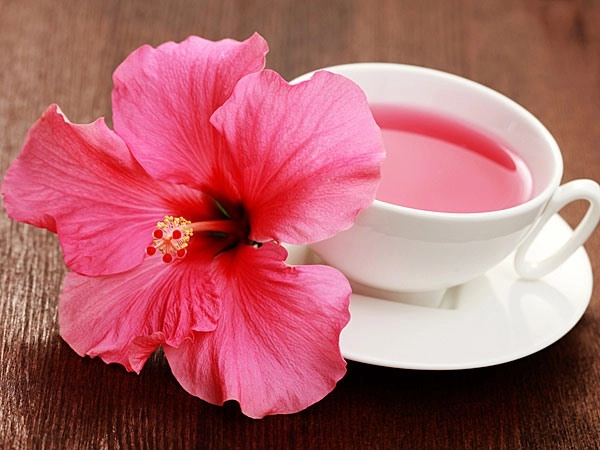
Planting and Caring for Hibiscus
1. How to Plant Hibiscus
Generally, hibiscus is planted by either seeding or cutting. Both methods are widely used.
Cutting propagation is suitable for mature, vigorously growing plants. However, if you prefer dwarf hibiscus, seeding is the best method.
1.1 Seeding Method
You can plant hibiscus seeds directly into the soil or pots. The soil should be mixed with fertilizer beforehand.
After seeding, use a mist spray to keep the soil moist. The ideal temperature for germination is 15-20°C. At 2-3 months old, the plant will begin to grow rapidly and prepare to flower.
1.2 Cutting Method
Select healthy, disease-free branches for cutting. Retain the top leaves and remove the lower ones. Place the cutting into pre-prepared soil. Ensure the soil is sufficiently moist, and the surrounding air is cool and humid to prevent wilting. The ideal temperature is 18-20°C, and water frequently.
After about 20 days to a month, the plant will begin to root and can be transplanted. The best time for cutting is summer or early autumn.
2. How to Care for Hibiscus
- Mulching: Apply mulch around the plant to retain moisture and protect the roots during cold winters.
- Watering: Water regularly, but avoid over-watering, which can cause root rot.
- Pruning: Hibiscus is a perennial woody plant, so annual pruning is necessary. After the first bloom season, prune old branches and retain only the young, growing ones.
- Fertilizing: While hibiscus does not require much nutrition during its growth period, in nutrient-poor soil, some fertilization is necessary to ensure healthy development. Apply a small amount of fertilizer after pruning and removing old flowers.
- Flower Removal: To encourage next-season blooms, remove spent flowers.
3. Pest Control for Hibiscus
Hibiscus is susceptible to pests and insect attacks. Regular inspections and preventive measures are essential. Common issues include:
Leaf spots, leaf burn, rust, and fungal infections: Avoid wetting the leaves while watering. Use Thiophanate-methyl solution, diluted to 0.1% at 70% concentration, to spray the plant when diseases are detected.
Red spider mites, leaf-eating caterpillars, and moth larvae: Use a 10% EC solution, diluted at a 1:2000 ratio, to control these pests.
Feng Shui Significance of the Hibiscus Plant
Many believe that hibiscus, with its bright colors, brings luck and prosperity. The hibiscus, resembling a sunshade, is thought to symbolize protection and bring peace to the household.
However, some associate hibiscus with negative connotations, linking it to unchaste women, which is why some people avoid planting it in their home gardens.
In some countries, hibiscus has positive meanings. For example, in China, hibiscus symbolizes pride and renowned beauty.
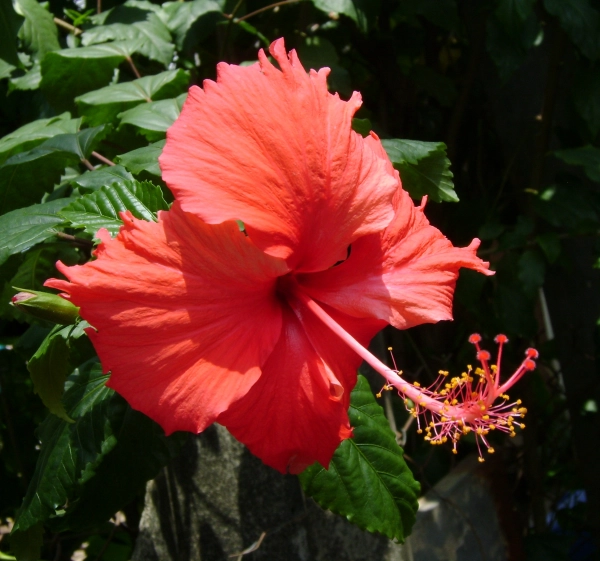
In North America, the hibiscus represents the perfect wife or woman. The *Hibiscus brackenridgei* is even considered a symbol of Hawaii. Here, hibiscus is seen as a flower of memory, innocence, and childhood nostalgia, while also bringing luck and happiness.
Depending on beliefs and preferences, you can choose to plant hibiscus in your home.
Types of Hibiscus
There are hundreds of hibiscus varieties, including tropical and cold-hardy hibiscus, as well as many hybrids and cultivated varieties. Four popular species include:
- Tropical hibiscus (Hibiscus rosa-sinensis): Known as Chinese hibiscus, this species produces large, vibrant flowers from spring to fall with adequate sunlight. In colder climates, grow them in pots and overwinter them indoors. A popular cultivar is 'Fiesta', with dark green foliage and bright orange, ruffled flowers. USDA Hardiness Zones: 7-11.
- Cold-hardy hibiscus (Hibiscus moscheutos): Native to North America, this species produces oversized flowers with delicate, paper-like petals in shades of pink, lavender, red, maroon, and white. A compact hybrid is 'Perfect Storm'. USDA Hardiness Zones: 4-9.
- Swamp hibiscus (Hibiscus coccineus): Native to the southeastern U.S., this unusual hibiscus has large, pinwheel-like red flowers that bloom in the summer. USDA Hardiness Zones: 6-9.
- Confederate rose (*Hibiscus mutabilis): This tropical shrub initially produces white or pale pink flowers that deepen to pink and then red within 1-3 days. USDA Hardiness Zones: 7-11.
Important Notes for Growing and Caring for Hibiscus
Hibiscus is generally easy to grow, but some common issues to be aware of include:
- Yellowing leaves: If you notice yellowing leaves, it may be due to sudden changes in weather conditions, improper watering, or insufficient fertilization. Some yellowing during seasonal transitions is normal, but excessive yellowing requires further investigation.
- Bud drop: High temperatures, insufficient light or humidity, and incorrect watering (too much or too little) can cause buds to drop.
Conclusion
The hibiscus plant not only adds vibrant, fresh beauty to any space but is also easy to grow and maintain. With its diverse array of colors, hibiscus is an ideal choice to highlight your garden, fence, or balcony. Its year-round blooming makes your living space more lively and colorful. Moreover, hibiscus carries positive feng shui meanings, bringing luck and prosperity to homeowners.
Start planting hibiscus today to enjoy its beauty and bring a refreshing, energetic atmosphere to your home!
Tags: Indoor Ornamental Plants | Outdoor Ornamental Plants | Bonsai Plants | Aquatic Ornamental Plants | Miniature Ornamental Plants |











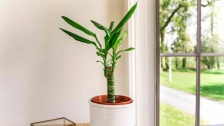
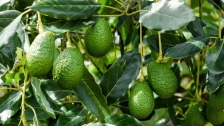
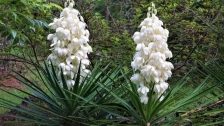





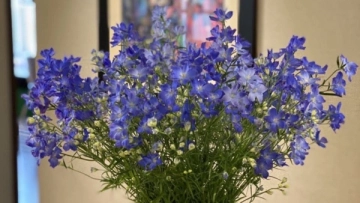
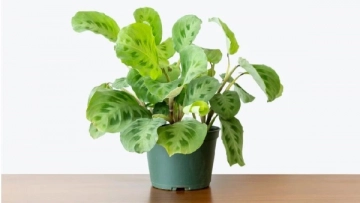

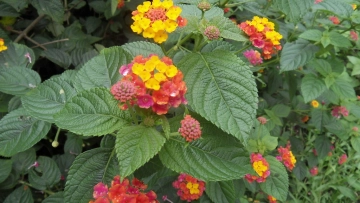
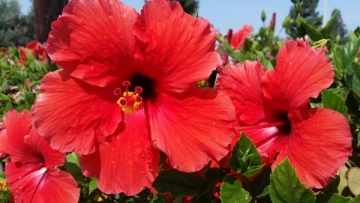
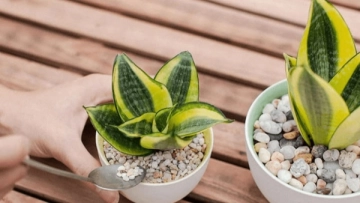
Richard Sirjoo
October 01 , 2024
Cam Giang
October 02 , 2024